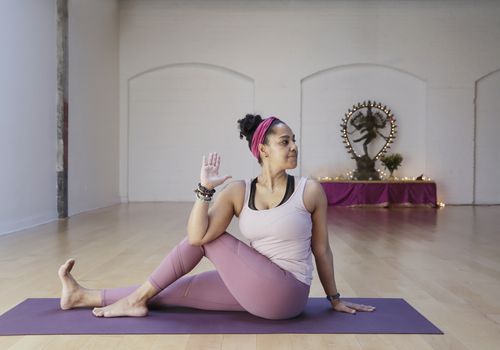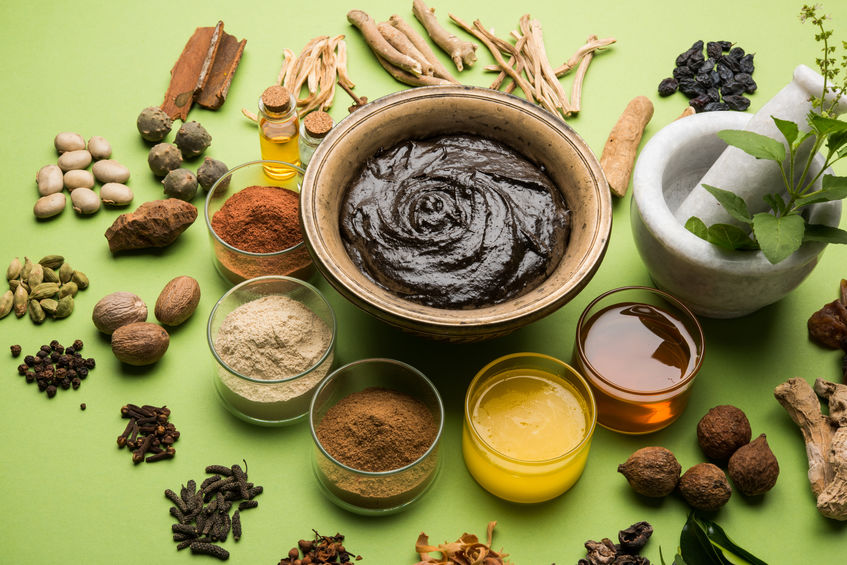
Yoga's therapeutic benefits can be found in many disciplines, such as medicine, psychology, and art. Modern medicine is very effective at treating disorders and physical illnesses, but is less effective when it comes to the emotional, intellectual and personality levels of a person’s life. Yoga promotes inner health in addition to physical well-being. This is closely tied to emotional and mental well-being. Even seasoned yoga practitioners can apply yoga for anxiety and depression.
Yoga is a holistic practice that incorporates the whole person into the healing process. Pancha Maya Kosha Model aids therapists to include the physical body, as well as other health aspects. Many yoga therapists are trained using a biopsychosocial model that focuses on pain and the mind. A healthy mind-state, regardless of the cause, will help make the healing process faster and more efficient.

Yoga therapy has many benefits. It improves one’s physical, emotional, as well as spiritual health. The ultimate goal of therapy is to achieve optimal health. Although yoga cannot cure every ailment it can help you heal mentally and physically. The positive effect yoga has on physical and mental well-being is a clear indication of its therapeutic value. The key to living a happy life is often found in meditative states of mind.
Yoga as therapy has many more benefits than the mental and physical ones. There are many benefits to yoga as a therapy for health and well-being. It can even enhance a patient's life quality. When yoga is performed as a form of therapy, it can help decrease stress, ease depression, and reduce blood pressure. Yoga is not an alternative to medicine. But it can help you get better. For more information, visit a qualified yoga therapist.
Yoga as therapy is an excellent way to improve circulation and blood flow in the body. Better circulation means oxygen-rich blood can reach all the tissues and organs of the body. This prevents strokes, heart attacks, and other serious health problems. It also reduces resting heart rates and increases endurance. This encourages weight gain, and decreases binge-eating. It will be easier for patients to adjust when they practice yoga.

Yoga can be used to reduce stress and anxiety. It helps people learn to control their stress levels, which is an essential part of a holistic treatment program. People with depression can benefit from yoga's therapeutic benefits. This type of meditation is great for relieving pain. You can start a meditation session, or even a Yoga class to alleviate anxiety and depression. Depending on the nature of your condition, yoga may be beneficial for you.
FAQ
What is a good 7-day workout schedule?
A seven-day exercise program should consist of three days per week of cardiovascular training (running, biking, swimming), two strength exercises (using free weights, weight machines), and one flexibility/core workout (yoga, Pilates). It is important to complete each activity at least once weekly. Each session should not last more than 45 minutes.
Cardiovascular Exercises: Running, biking, swimming
The goal is to get in at least 60 minutes of cardio activities per week. You can aim for 75 minutes a week for best results. Cardio exercises can help improve blood flow and stimulate muscle growth.
Strength Training
Cardio exercises target your heart and lungs. Strengthening your muscles and bones is the opposite. Strength training increases lean muscle mass and helps to burn calories even at rest.
Flexibility & Core Workouts
You can strengthen your entire body by strengthening flexibility and core exercises. Both yoga and Pilates can be great choices.
Is it possible to go to the gym every day of the week?
Yes, you can go to a gym seven days per week. But not all at once. You have to find a time where you can do this without feeling too exhausted and drained.
This will help to keep you focused and give you energy for other things.
You should also ensure that your meals are well-balanced. This will help you not feel tired or slow at the gym.
You must ensure that you don't have any other competing demands on your time. If you have children, it is a good idea to avoid going to school on the evenings as they can distract from your workout.
What Is The Best Way To Lose Weight?
Losing weight is easier said than done. Many people give-up easily because they don’t have the right information.
There are simple steps you can take in order to lose those extra pounds.
You must first ensure that you are consuming fewer calories than what you burn. If you consume more calories than what you burn, you will gain weight.
For all of those extra calories to be burned, it is important that you exercise regularly. You have the option of doing jogging or walking or cycling, as well as dancing.
Third, you must stop smoking cigarettes and drinking alcohol. These habits lead to a higher intake of calories than usual.
Fourth, cut down on junk food and fatty foods. You can replace them by healthier choices such as fruits, vegetables or lean meats.
Fifth, you should change your lifestyle to adopt new habits. For example, you may need to get up early every morning to exercise before work.
Sixth: You must be disciplined, and you must follow your diet plan.
For those extra calories, you could join a class or go to a gym.
You will quickly notice the difference by following these simple tips.
Why Metabolic Well-being is the Key to Aging Well
People are living longer lives today than at any point in history. However, as they age, so do their chances of getting sicker. Despite making great progress in medical science, it is becoming more apparent that our current approach to medicine is not working.
It's time to change our perceptions of health and aging. We have to start looking at metabolic health - not just weight loss but overall wellness - as the key to healthy aging.
If you want to live a healthy, active lifestyle for the rest of your life, it is important to maintain a strong metabolism throughout your entire life.
The good news is that there are many ways to improve your metabolic health. You can improve your metabolic health by incorporating these 7 foods in to your diet.
-
Resveratrol in blueberries has been shown to support cell longevity. They also contain antioxidants and vitamins C & E.
-
Pinto beans and lentils make excellent sources of fiber as well as plant-based protein. These nutrients help keep blood sugar levels steady so they won't spike and crash.
-
Broccoli's sulforaphane has been shown to protect DNA from damage in research. It may even slow down the progress of cancer.
-
Chia Seeds are high in omega-3 fatty acids and fiber. They are rich in protein and antioxidants. All of these nutrients help promote heart health, brain function, and gut health.
-
Green Tea is rich in polyphenols known as catechins. Studies have shown that green tea contains catechins which are linked to lower bone fractures and cardiovascular disease. They also reduce cognitive decline and diabetes risk.
-
Salmonis rich in vitamin D and low in saturatedfat, salmon is one of the best sources for lean protein.
-
Walnuts have omega-3s and antioxidants such as alphalipoic acid (ALA). ALA helps boost energy production and protects against inflammation.
What is butter good for?
Butter is one of many good sources of saturated fats. This fat is good for hair and skin health, as well as stronger bones.
Butter also contains vitaminK, which prevents bleeding after cuts and bruises. Vitamin K is combined with vitamin C to prevent bruises.
Butter is also rich mineral, including calcium and phosphorous. These elements help to build stronger bones and teeth.
Butter does have some drawbacks. Butter has high cholesterol. Some studies show that consuming too much cholesterol may increase the risk of developing cardiovascular disease.
Butter is also high in saturated fat which can lead to obesity and higher cholesterol.
But if butter is a must, you can spread it on bread and not dip it in soups or salads. Bread absorbs more oil that pasta and potatoes.
Statistics
- Cardmembers earn 5% Back at Amazon.com with a Prime Credit Card. (amazon.com)
- An estimated calorie range for moderately active adult males falls between 2,200 to 2,800 calories per day, depending on age. (eatright.org)
- 10 pounds in a month is likely during a lean bulking phase, especially for beginners. (muscleandstrength.com)
- Get free shipping and 25% off today. (healthline.com)
- According to the American Heart Association, blood pressure should be checked at least once every two years, beginning at age 20. (my.clevelandclinic.org)
External Links
How To
What food is the healthiest for men?
Men should eat five servings per day of fruits and vegetables. They should avoid fast food and limit red meat.
Fruits and vegetables are high in antioxidants which help prevent cancer, heart disease, and other diseases.
Vegetables include broccoli, cauliflower, carrots, spinach, tomatoes, peppers, cucumbers, lettuce, mushrooms, etc.
Also, beans and peas are rich in protein and fiber.
The best sources of omega-3 fat acids are nuts and seeds. Essential for hormone production and brain function, omega-3 fatty acids are vital.
Fish is another excellent source of omega-3s. The mercury in fish is higher than that of most meats. However, fish liver oil does contain fewer toxins.
It is necessary to have a healthy growth rate and develop your brain.
Poultry is a good source of lean protein. Chicken breast is the most nutritious meat.
Lean beef is low in saturated fats and cholesterol. Red meat should be limited as too much iron can increase your chances of developing prostate cancer.
Avoid processed meats such as sausage and hot dogs. These have added nitrates which can be carcinogenic.
There is no doubt that exercise is essential for maintaining overall health. But what if you're already working out regularly? What can you do to improve or maintain your physical condition?
Yes! There are many things you can do to get the best out of your workouts. Here are some tips on how to maximize your workout:
Start slow. You may hurt yourself if you push yourself too hard in your first session. You can start slowly increasing your intensity by starting at a comfortable pace.
Before and after. Stretching can help to loosen tight muscles, decrease soreness, improve flexibility, and reduce pain. Stretching can be done standing, lying down, or walking.
Cool down. This is especially important when you do cardio exercises. It is important that your body has time to recover from each session so it doesn’t become exhausting. You can cool off by taking slow, deep breaths and walking.
Hydrate. Fluid intake is important to keep your muscles hydrated and prevent muscle cramps. Water is the ideal drink, but sports drinks can also help.
Eat right. Make sure you are getting enough calories each day. It will keep you feeling energized and focused while you work out by eating regular meals throughout each day.
Get some sleep. If you get adequate sleep, your body will be energized and ready to go for your next workout. You must also get adequate sleep to heal damaged tissues.